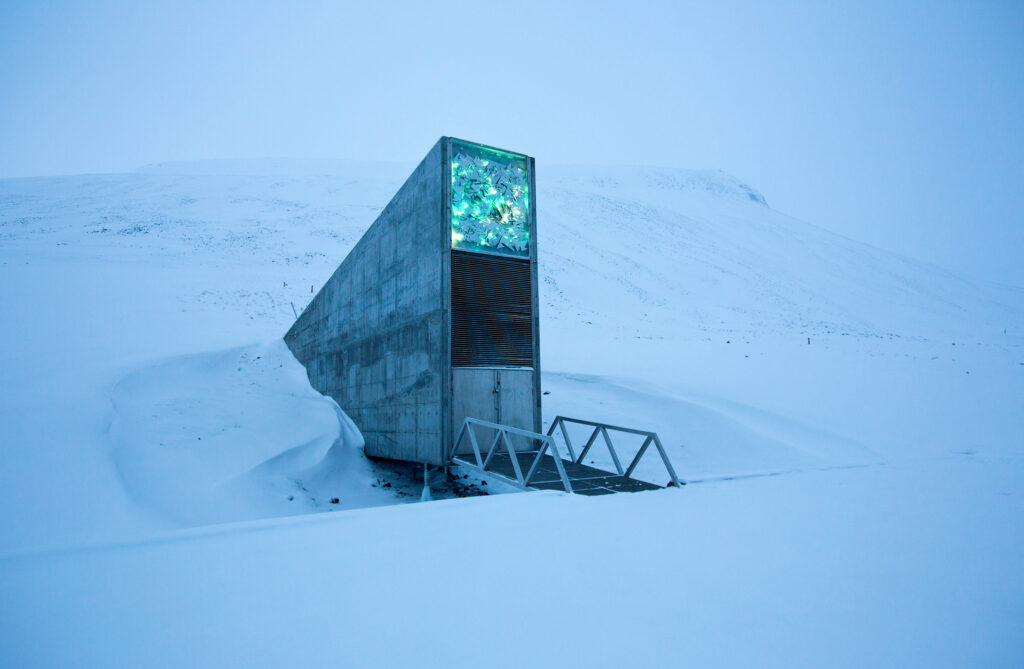The obstacles to having live collections seems to begin quickly and never end! It makes me think back to being very young and asking my parents if we could get a dog. The answer to this question usually involved “you will have to take care of it everyday, multiple times a day, for its’ entire life. The care is a constant!
I’m assuming that a similar conversation that comes up when the idea of a live collection comes up at a museum. Although museums are very skilled at caring for the objects in the collections, bringing a live element certainly ups the ante.
First of all, the cost of having a living collection can be very high. Living organisms need specific temperatures, sunlight, and nutrients or food. These are all ongoing costs that come with the commitment to a live collection. I enjoyed watching the video about the Global Seed Vault, an amazing project that has immense value. I was curious, how much does it cost to keep these seeds safe? The answer, according to NordGen, the organization that is responsible for managing the seed vault, is about €1 million per year ($1.05 million per year.) Although this is a lot of money, it cannot compare to the value of having these seeds as a global resource. A few folks in our weekly discussion who have worked on live collections/exhibits also mentioned that the costs can grow quickly as the collection needs staff to care for it, specialized equipment, oftentimes food, and daily monitoring.
I gather that another complication to a living collection would be finding the right space, facilities and equipment for it. Derek mentions in his lecture that the staff that worked on his arthropod exhibit at UAMN needed to come up with a clever way to open specimen containers, but only when they needed to be opened. This was resolved with a special magnetic device that would allow somebody to open to container if they had the corresponding magnet. The seed vault video also mentions specialized equipment that is needed to keep the seeds safe and viable. Botanical gardens have to acquire large portions of land that will host plant species that will live there. Many collections in museums are housed on shelves and drawers, but living collections require more specialization – which again brings us back to the high costs of these types of collections.
One of the things that I thought about during our class discussion this week is that living collections often walk a fine line between collections for fun or pleasure and collections that are educational, and have a value in keeping. When visiting a history/art museum in Utah I remember coming across a small exhibit with insects that seemed somewhat out of place for the museum. I wondered, why are there here? What am I supposed to learn from this? I will admit, watching the critters build pathways in the sand was entertaining, but it made me question what role this was supposed to play in the bigger picture of the museum. I wonder when curators come across the opportunity to house a living collection, how do they decide that it will be something worth taking on. Who says we can take these living things and house them within the collection? Why would a living collection fit into the purpose of the museum? How will this benefit us in years to come. And also, are we able to care for this collection if we come upon hardships like natural disasters or financial downfall?
Lastly, I consider what the cultural implications of a live collection are. I was intrigued by the global seed vault video and wondered, who can put seeds there? Who can take them out? According to the seed vault website, gene banks holding long-term and sustainable seed collections can deposit duplicate seeds to the Seed Vault. When they are deposited there, they are still owned by the original gene bank, and can only be retrieved by that same gene bank. I would like to learn more about what happens to seeds from Indigenous lands, and what options there may be for preservation.
My question for the class is, where do you see the line between ethical and non ethical live collections? (Think about zoos, living history museums, etc.)

The care for live collections is indeed constant as well as the expensive costs that come along with them. The line between ethical and non-ethical live collections mainly follow the idea of how the live collections were acquired (i.e. were correct permit procedures followed), are live collections being maintained to the correct settings associated with the natural habitats, and is there fundamentally a purpose for an institution to hosts such live collections.
Hi Maxine!
I really enjoyed reading your post! It was very engaging and super interesting! To answer your question, I really do think that the line that is drawn between ethical and non ethical live collections is how humane these live collections are in along with how the heritage workers preserve and maintain these collections. For me, it’s all about the moral compass of how the collections are managed overall.
Hey Maxine, I like how you compared the relation to owning a dog and the care of live collections as both come with a tremendous amount of work and care! and to answer your question, I think about taxidermy or how zoos have animals in cages that may not be suitable for their needs or aquariums housing whales and other animals where they clearly need a lot more room. Is it really for research or is it for profit?